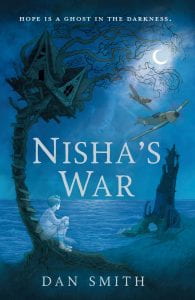For someone who watched the full series of ‘Tenko’ as a young person, this subject matter brings back many memories. For those who are far too young to have watched the original programmes, Tenko is the story of the fall of Singapore and the imprisonment of women and children by the Japanese; the name tenko means “roll-call” in Japanese. It caused quite a stir at the time, because of its portrayal of the prison camps, the social class system and the racism towards non-European prisoners. The war in the far-east has received far less attention than the war in Europe, or even the final assault on the main Japanese islands. This conflict in Malaya and Burma has been considered “the forgotten war” and yet the suffering is almost beyond comprehension; both for the European middle classes and especially for the general population of these countries. This is a period that deserves to be remembered and the people appreciated for what they suffered.
The story begins in 1942 when Nisha and her mother arrive at grandmother’s island home in the north east of England; they are fleeing their horrific experiences during the fall of Singapore to the Japanese. Nisha’s mother suffers an attack of malaria and her life hangs in the balance. Nisha is desperately worried about her mother, but also about her missing father, when she meets a mysterious boy in the garden. No one else seems to know the boy and we gradually realize that he is a ghost, who is linked to the old tree that he sits under. He offers to help her mother and father, if Nisha will find three ‘truths’ in the house. How she tries to do this (without knowing what they are) and how she solves some long-standing mysteries makes for an exciting and yet heart-rending story.
north east of England; they are fleeing their horrific experiences during the fall of Singapore to the Japanese. Nisha’s mother suffers an attack of malaria and her life hangs in the balance. Nisha is desperately worried about her mother, but also about her missing father, when she meets a mysterious boy in the garden. No one else seems to know the boy and we gradually realize that he is a ghost, who is linked to the old tree that he sits under. He offers to help her mother and father, if Nisha will find three ‘truths’ in the house. How she tries to do this (without knowing what they are) and how she solves some long-standing mysteries makes for an exciting and yet heart-rending story.
This is an absolutely stand out story with wonderful characters and a magical and yet truly believable story. Nisha is such a strong yet vulnerable character, who has been through many traumas. She has a mixed heritage family, with an English father and an Indian mother, and although her father’s job has shielded her from racial discrimination, she finds that in England many of the people are far more wary and even hostile. The story is told with two separate ‘voices’, both of them showing the different aspects of Nisha’s life. We have the contrast between the main narrative, set in an England still beset by German raids, rationing and a sense of exhaustion with the war; then we have the journal that Nisha keeps (of what happened in Singapore), which really highlights the trauma that she has suffered and her very close escape from death by drowning. There are many twists and turns along the way and we see how she is haunted by her experiences, but gradually she is able to find her place in her new community and build a relationship with her very formidable grandmother.
This is proving to be one of my highlights of the year, so far. It is a story that lingers in the mind and makes you appreciate the challenges that previous generations faced, and that people in many countries are still facing. I hope that this will help young people understand the past and hopefully want to find out more about less well known conflicts. This story has ‘award nomination’ written all over it and I am sure it will appear in some lists over the coming year or so.
The Author
I first came across Dan’s work when I was asked to review a book of his called “Big Game”, which was a great read. It is safe to say that the author has gone from strength to strength.
was a great read. It is safe to say that the author has gone from strength to strength.
“Growing up, Dan Smith led three lives. In one he survived the day-to-day humdrum of boarding school, while in another he travelled the world, finding adventure in the padi fields of Asia and the jungles of Brazil. But the third life he lived in a world of his own, making up stories . . . Which is where some people say he still lives most of the time.
Dan writes for both children and adults”
